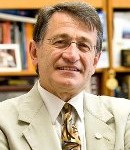 Bill Predebon, chair of the Department of Mechanical Engineering-Engineering Mechanics, has been elected vice president for education of the American Society of Mechanical Engineers (ASME). The election took place on Nov. 14 at the ASME World Congress in Montreal.
Bill Predebon, chair of the Department of Mechanical Engineering-Engineering Mechanics, has been elected vice president for education of the American Society of Mechanical Engineers (ASME). The election took place on Nov. 14 at the ASME World Congress in Montreal.
Predebon joined the Michigan Tech faculty in 1976, after serving as a mechanical engineer at the US Army Ballistic Research Laboratory, Aberdeen Proving Grounds in Maryland. He has won Tech’s Distinguished Teaching Award, the W. R. Shapton Outstanding Service Award and the first annual Martin Luther King Award.
He designed and implemented a major curriculum revision for mechanical engineering-engineering mechanics, including the signature Senior Design program.
 The ME-EM Graduate Seminar speaker on Thursday, November 20th at 4:00 in 103 EERC will be Amer Tahat, PhD Student, Computational Sciences and Engineering, Department of Computer Science, Michigan Tech University,
The ME-EM Graduate Seminar speaker on Thursday, November 20th at 4:00 in 103 EERC will be Amer Tahat, PhD Student, Computational Sciences and Engineering, Department of Computer Science, Michigan Tech University,
The title of his presentation will be ‘Prototype Verification System PVS: Cutting Edges Human-Machine Interactive Verification, Modeling and Analysis Software’.
PVS is an interactive prototype verification system developed by SRI (Stanford Research Institute) with collaboration of NASA. PVS has been widely used by NASA to verify the correctness of their designs under extreme safety measures e.g Next Generation Air Traffic System (NextGen) and Scalable Processor-Independent Design for Extended Reliability (SPIDER). It has very powerful and ultra-reliable specification and semi-automatic verification language which can capture wide range of real world applications like complicated critical and autonomous control systems in: Aerodynamics, Robotics, Security and Communication Protocols. It also has been used for the design and the verifications of hardware and software of parametric critical systems, mathematical theories, and it was used even in modeling and analyzing meta-physical arguments! In this seminar we would like to introduce the revolutionary features of interactive analysis and verification system PVS. We will provide some examples of its applications in solving real life problems. Dr. Ossama Abdelkhalik (ME-EM department) and Amer Tahat PhD student (CSE) are planning to conduct a tutorial about this tool here at MTU with a generous collaboration of NASA Langley.
PVS received CAV award in 2012 ( 2012 CAV (Computer-Aided Verification) Award). PVS is an open source since 1994 and is known for its user friendliness. It has been used in industry as well as in academic research. For more information about related research fields please visit NASA formal methods group (http://shemesh.larc.nasa.gov/fm/fm-pvs.html), and PVS SRI website (http://pvs.csl.sri.com/index.shtml).
Amer Tahat is a Computational Sciences and Engineering PhD student, computer science department, at Michigan Tech University. I joined my PhD program in Sept 2012. In Oct 2012 I attended NASA Langley and National Institute of Aeronautics PVS (Prototype Verification System) class, in Hampton Virginia. Between Oct 2012 and March 2013 I was involved in a short project using PVS with the collaboration of NASA Langley. Since then I have been a member of Software Design Laboratory at Michigan Tech university and have been part of two projects under supervision of Dr. Ali Ebnenasir funded by National Science Foundation in which I study the applications of mechanical verifications using theorem prover PVS. Between 2012 and 2014, I attended and participated in several international conferences in formal and automatic verification techniques. In particular NASA Formal Methods Symposiums of Automatic Reasoning (NFM) NFM13, Moffett Field, Silicon Valley, CA and NFM14 in Johns Space Center, Huston, TX. Also in Sept 2014 I participated by a paper in LOPSTR 14 (24th International Conference of logic-Based Program Synthesis and Transformation) in UK.
In last summer 19-26 May 2014 I attended the Stanford Research International (SRI) forth summer school in formal techniques, Menlo College, Stanford, CA, in which assisted in organizing the student presentation secession. In the school I presented a PVS based analysis of a 1000 year metaphysical controversy http://fm.csl.sri.com/SSFT14/. I received an NSF generous award to attend this school.
Lately the work has been submitted to FSEN International Conference in Foundations of Software Engineering FSEN 15. Currently I am exploring more applications of PVS with the collaboration of Dr. Ossama Abedlkhalik ME-EM department on some other fields in Orbital Mechanics.
 Seven Michigan Tech students attended the Kiewitt Women’s Construction Leadership Seminar held in Omaha, Nebraska at the Kiewitt Corporate Headquarters November 6-8, 2014. Candidates were chosen from a pool of sophomores and juniors who have demonstrated leadership skills, a drive for success, and a passion for the construction and/or engineering professions. Kiewitt selected 50 collegiate female leaders to participate in the event designed to challenge and develop their leadership skills. Attending were civil engineering majors Emily Blaney, Lauren Krueger, Natalie Parker, Autumn Storteboom, and Rachelle Wiegand, along with mechanical engineering majors Erika Harris and Erin Richie.
Seven Michigan Tech students attended the Kiewitt Women’s Construction Leadership Seminar held in Omaha, Nebraska at the Kiewitt Corporate Headquarters November 6-8, 2014. Candidates were chosen from a pool of sophomores and juniors who have demonstrated leadership skills, a drive for success, and a passion for the construction and/or engineering professions. Kiewitt selected 50 collegiate female leaders to participate in the event designed to challenge and develop their leadership skills. Attending were civil engineering majors Emily Blaney, Lauren Krueger, Natalie Parker, Autumn Storteboom, and Rachelle Wiegand, along with mechanical engineering majors Erika Harris and Erin Richie.
UPDATE
Seven Tech Women Chosen for National Construction Leadership Seminar
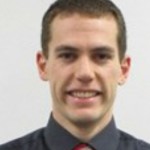 The ME-EM Graduate Seminar speaker on Thursday, November 14th at 4:00 in 103 EERC will be Dr. Steven Elmer from Michigan Tech: Department of Kinesiology and Integrative Physiology.
The ME-EM Graduate Seminar speaker on Thursday, November 14th at 4:00 in 103 EERC will be Dr. Steven Elmer from Michigan Tech: Department of Kinesiology and Integrative Physiology.
The title of his presentation will be ‘Positive Aspects of Negative Work’.
For over 100 years, scientists have been intrigued by the observation that skeletal muscle can produce greater absolute force during active lengthening contractions (“negative work”) compared to active short-ening contractions (“positive work”). In addition to this increased capacity for force production, negative work can be performed at a lower energy cost and with less perceived effort compared to positive work. Taken together, these observations emphasize the high-force, low-cost nature of negative work and sug-gest that exercise training involving negative work could serve as a potent stimulus for improving skeletal muscle function. In this presentation, I will discuss how negative work exercise training has served as an effective method for increasing quadriceps muscle size, strength, and mobility in a variety of populations ranging from patients with chronic disease to older adults to competitive athletes. Subsequently, I will share some preliminary work in which my group has extended the application of negative work to the upper body. Along the way, I will point out some mechanical design and safety challenges that we have encoun-tered while developing the negative work lower and upper body ergometers. By the end of the presenta-tion I hope to convince the audience that if an engineer from department trained for eight weeks using negative work exercise (e.g., 10-30 minutes/session, 3 sessions/week) they would be more powerful than a Tour de France winning cyclist! On that note this presentation will highlight the “positive aspects” of “negative work”.
Steven Elmer is a new Assistant Professor in the Department of Kinesiol-ogy and Integrative Physiology at Michigan Technological University. He completed his doctoral and post-doctoral training at the University of Utah and previously worked at the University of Maine. His research in-terests in health are broad in nature and he uses a cycling model to investigate as-pects of skeletal muscle function and dysfunction. Applications for his research range from basic aspects of neuromuscular function to applied human perfor-mance in a variety of settings including injury, rehabilitation, ergonomics, and sport. As a new member of the Husky Family Dr. Elmer looks forward to devel-oping collaborations across campus.
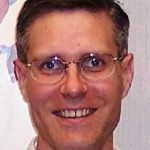 The ME-EM Graduate Seminar speaker on Thursday, November 6th at 4:00 in 103 EERC will be Dr. Jeffrey Doering from Ford Motor Company.
The ME-EM Graduate Seminar speaker on Thursday, November 6th at 4:00 in 103 EERC will be Dr. Jeffrey Doering from Ford Motor Company.
The title of his presentation will be ‘Driveline Input Shaping via Clutch Torque to Mitigate Shuffle After Lash Crossing’.
We will use simplified 2nd order linear equations of motion for a driveline after lash crossing to evaluate different simple torque input schemes and derive an ‘optimum’ input ramping scheme to achieve a desired steady-state driveline torque level with a minimum level of oscillation. Due to the simplicity of the type of inputs considered, closed form solutions for the driveline response are developed and evaluated to yield physical understanding of the driveline management problem after a lash crossing event, especially to pre-vent driveline rebound or shuffle. Using the stiffness, inertia and level of damping in the driveline, normal-ized ramp rates and ramp times are developed to coordinate the torque input after lash crossing with the twisting of the driveline and the initial twisting velocity at the end of lash crossing.
Jeff Doering received the B.S. in Aerospace Engineering from the University of Minnesota, Minneap-olis, in 1991 and the M.S. in Mechanical Engineering from Stanford University in 1992. In 2000, Jeff received his Ph.D. in Mechanical Engineering from Michigan Technological University. Since 1992, he has been with Ford Motor Company, Dearborn, MI, working in the areas of engine and vehicle controls in both product development and research, where he is currently a Technical Leader in Research and Advanced Engineering.
Jeff currently leads a team of engineers working on vehicle and engine controls, primarily focused on HE-V/PHEV/BEV applications. Jeff has received over 90 U.S. Patents, with approximately 30 in production in Ford vehicles.
The General Motors Foundation has given Michigan Technological University a $100,000 grant through its University/Organization Partner Program. The gift will support a variety of student activities, including the Advanced Hybrid Electric Vehicle and Advanced Motorsports Enterprises, Environmental Engineering senior design programs, student groups and diversity initiatives.
Read More
The Society of Women Engineers (SWE) honored Michigan Tech alumnae Britta Jost and Kaitlyn Bunker at its annual conference, WE14, in Los Angeles last week. Jost received the SWE Distinguished New Engineer award, and Bunker was recognized as 2014 Outstanding Collegiate Member.
Read More
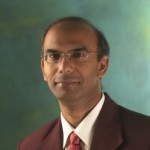 The ME-EM Graduate Seminar speaker on Thursday, October 30th at 4:00 in 103 EERC will be Dr. Ghatu Subhash from the University of Florida, Gainesville.
The ME-EM Graduate Seminar speaker on Thursday, October 30th at 4:00 in 103 EERC will be Dr. Ghatu Subhash from the University of Florida, Gainesville.
The title of his presentation will be ‘Cavitation-Induced Damage in Brain Tissue and Surrogates: Relevance to TBI’.
Traumatic brain injury (TBI) has reached epidemic proportions in US. Around 1.7 million people are diagnosed with TBI each year. While a majority of these injuries are due to physical blows that may occur because of a fall or during an athletic activity, blast-induced mild traumatic brain injury (bmTBI) is specific to soldiers who are exposed to frequent improvised explosive device (IED) blasts in a hostile environment. A blast wave consists of a high pressure front followed by a negative pressure tail. It is commonly believed that only the high pressure front causes significant damage to the brain tissue. In recent years, new evidence has emerged revealing that extensive cavitation indeed occurs in brain tissue due to the negative pressure that immediately follows the high pressure front in the blast wave. The negative pressure initiates cavitation bubbles which collapse and release shock waves, and cause significant local neuronal and astrocyte damage in sensitive areas of the brain. The current research focusses on investigating this specific phenomena in brain tissue and surrogates (e.g., gels). The first goal of this research is to develop an experimental facility to characterize cavitation in a simulated brain environment and measure associated deformation during bubble growth and collapse on a tissue surrogate. The second goal is to quantify the neuronal and astrocyte injury when a brain tissue is exposed to blast waves. A novel experimental facility has been developed to visualize controlled cavitation under high-rate stress wave loading, whose pressure profile mimics that of a blast shock wave, i.e., it contains a high pressure component followed by a negative pressure component. Highly sensitive pressure sensor measures the pressure inside the fluid filled chamber where a single air bubble is introduced at a specified location. Upon arrival of the pressure wave the bubble grows rapidly and collapses. Negative pressure magnitude, which dictates bubble growth rate and its final size, can be controlled. A high speed digital camera with frame rates up to 300,000 per second was employed to capture the tissue deformation characteristics. Digital Image Correlation (DIC) technique was employed on the gel tissue to capture the time varying strain field during the bubble growth, collapse, and subsequent generation of local shock wave. The relationships between the incident pressure, cavitation bubble dynamics, and induced deformation within a tissue surrogate during shock loading are investigated. In the next step, live brain tissue slices extracted from rats were tested with specified areas (e.g. Hippocampus) exposed to single bubble cavitation. Postmortem histological studies have been performed to quantify neuronal and astrocyte damage as a function of shock pressure. Our experiments have shown that the shock-induced cavitation bubble growth and collapse can be captured using this experimental facility and the results indicate that sensitive tissue damage indeed occurs due to the shock wave generated by cavitation bubble collapse.
Professor Subhash obtained his MS and PhD degrees from University of California San Diego and conducted post-doctoral research at California Institute of Technology, Pasadena, CA. He joined the faculty of Michigan Technological University (MTU) in 1993 and then moved to University of Florida (UF) in 2006. He has received numerous awards for excellence in teaching, research and professional service, including the ‘Significant Contribution Award’ American Nuclear Society – Materials Science and Technology Division (2014), Fellow of Society of Experimental Mechanics (2014) ‘Technology Innovator Award’ University of Florida (2014), UF Research Foundation Professor (2013), College of Engineering Teacher/Scholar of the year (2013), ‘2011 Researcher of the Year’ Mechanical and Aerospace Engineering Department, Second Place of the Best paper Awards at the 31st Annual American Ceramic Society meeting (2008), Michigan Tech Distinguished Research Award (2005), ASME Fellow (2004), ASME Student Section Advisor Award (2003), Society of Automotive Engineers (SAE) Ralph R. Teetor Educational Award (2000), American Society of Engineering Education (ASEE) Outstanding New Mechanics Educator Award(1996), and Distinguished Teaching Award at MTU (1994). He is an Associate Editor of Mechanics of Materials, Journal of the American Ceramic Society, Experimental Mechanics and ASME Journal of Engineering Materials and Technology. He has graduated 21 PhD students and is currently advising 12 PhD students in various fields related to processing, microstructural characterization and multiaxial behavior of advanced materials including ceramics, metals, composites, gels and brain tissue. He has authored around 150 peer reviewed journal papers and 70 conference proceedings. He has filed for 8 patent applications in various fields of material processing, mechanical testing, food packaging, and protective helmet design. His recent invention on fluid filled energy absorbing cushions for protective equipment has received widespread attention from major TV networks (Fox , CBS and 40 other local TV channels), and radio stations (including NPR) and articles by Reuters, ASEE morning bell and many local newspapers. He has given numerous invited lectures and seminars at many universities and international conferences.
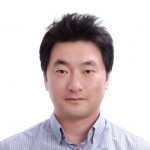 The ME-EM Graduate Seminar speaker on Thursday, October 23rd at 4:00 in 103 EERC will be Dr. Dong Hwan Shin a post doc in the Mechanical Engineering Department at Michigan Tech.
The ME-EM Graduate Seminar speaker on Thursday, October 23rd at 4:00 in 103 EERC will be Dr. Dong Hwan Shin a post doc in the Mechanical Engineering Department at Michigan Tech.
The title of his presentation will be ‘Local Aggregation Characteristics and Visualization of Intermediate Layers during Evaporation of Nanofluid Droplets’.
Recently, nanofluids (NF) are of substantial interest because of their potentials in exhibiting improved thermal performance. Thus, nanofluids are expected as the next generation of cooling fluids for automobiles and electronic devices. One of Dr. Shin’s research interests is about characterization of nanofluid droplet evaporation by using confocal and regular inverted microscopic systems. This presentation will introduce his recent work regarding the nanofluid droplet evaporation: Evaporation characteristics of nanofluid droplets with various volume fractions of 50 nm alumina (Al2O3) particles are experimentally examined. The effect of particle concentrations on droplet evaporation rates is examined. The corresponding wettability changes and the total evaporation time are also examined. Besides, he will also introduce the spatial non-uniformity of suspended nanoparticles in the droplet caused by the local aggregation visualized by using the inverted microscope system. The results show that the effective thermal conductivity should be changed according to the non-uniform distribution of nanoparticles inside a droplet on the surface. Next, the contact lines of nanofluids droplets during evaporation are visualized using a high-speed reflected mode slit-confocal. The present work deals with a challenging issue on the experimental visualization of the intermediate layer because the conventional optical approach cannot visualize this layer due to the optical limitation. The intermediate layer thickness varies with time during evaporation, which is observed based on the fringe pattern analysis. Those results show the feasibility of using fringe patterns of contact lines can provide instability of a contact-line region in the thin film and further explain heat and mass transfer in this region.
Dr. Dong Hwan (DH) Shin is a post-doctoral research scholar of Mechanical Engineering-Engineering Mechanics at Michigan Technological University. He received his B.S., M.S. and Ph.D in Mechanical Engineering in Chung-Ang University (CAU) in 2008, 2010 and 2014, respectively. He has already been to MTU as a visiting scholar three times in 2010, 2012 and 2013. His research interests are nanofluids and its applications, micro-droplet evaporation and its applications, flame spray and its applications, and computational fluid dynamics. He has published 17 journal papers and 22 proceedings.
